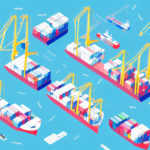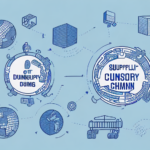Understanding the Impact of Trade Remedies on the Supply Chain
Trade remedies are measures that governments implement to protect their domestic industries from unfair competition posed by foreign producers. These measures address issues arising from the import of goods or services that are subsidized or heavily supported by other countries. In this article, we'll delve into the various types of trade remedies, their effects on the global supply chain, and strategies businesses can adopt to navigate these changes effectively.
What are Trade Remedies and Why are They Used?
Trade remedies are policy tools that governments employ to shield their domestic industries from unfair competition due to imported products. The primary motivations for using trade remedies include:
- Protecting Domestic Industries: Guarding against the adverse effects of low-priced imports that can undermine local businesses and employment.
- Addressing Economic Impacts: Mitigating issues such as job losses, reduced wages, and decreased demand for domestically produced goods caused by increased imports.
The overarching goal is to create a level playing field, enabling domestic producers to compete fairly in their home market.
Governments can employ various types of trade remedies, including:
- Anti-Dumping Measures: Activated when foreign companies sell goods below production costs, potentially harming domestic producers.
- Countervailing Duties: Imposed to offset the effects of foreign subsidies that give imported goods an unfair advantage.
- Safeguards: Implemented to protect domestic industries from sudden surges in imports that could cause significant injury.
For more detailed information, refer to the World Trade Organization (WTO).
The Most Common Types of Trade Remedies Explained
Trade remedies encompass a variety of tools designed to regulate international trade and protect domestic interests:
- Tariffs: Taxes imposed on imported goods, making them more expensive for consumers and less competitive against domestic products.
- Quotas: Limits on the quantity of specific imported goods allowed into a country, restricting market access for foreign producers.
- Anti-Dumping Measures: Actions taken when imported products are sold below their domestic market value, causing injury to local industries.
- Countervailing Duties: Additional tariffs applied to offset subsidies provided by foreign governments to their exporters.
- Voluntary Import Restraints: Agreements where exporting countries limit the quantity of goods exported to avoid more severe trade barriers.
Among these, tariffs are particularly contentious. While they protect domestic industries, they can lead to higher consumer prices and provoke retaliatory measures from other nations, escalating into trade disputes.
Recently, trade sanctions have also emerged as significant trade remedies. These measures aim to achieve political or economic objectives by restricting trade with specific countries, though they can inadvertently harm neutral businesses and individuals.
How do Trade Remedies Affect the Global Supply Chain?
Trade remedies have profound implications for the global supply chain:
- Increased Production Costs: Higher tariffs and duties can raise production expenses for businesses, leading to increased prices for consumers.
- Market Distortion: Reduced competition can lead to inefficiencies and hinder innovation within domestic markets.
- Trade Disputes: Escalating trade tensions can disrupt existing trade relationships, affecting the flow of goods and services internationally.
- Supply Chain Diversification: Businesses may need to seek alternative suppliers or adapt their production processes to circumvent trade barriers, resulting in longer lead times and higher transportation costs.
Despite these challenges, trade remedies can also bolster domestic industries by fostering investment and job creation. Balancing these benefits against the potential drawbacks is crucial for maintaining a resilient and efficient global supply chain.
The Impact of Tariffs on Imports and Exports
Tariffs influence both imports and exports in several ways:
- Consumer Prices: Higher tariffs on imports make foreign goods more expensive, reducing consumer demand.
- Retaliation Risk: Imposing tariffs can provoke retaliatory measures from other countries, leading to a tariff war that strains international trade relations.
- Export Challenges: Tariffs can decrease the competitiveness of exported goods, as partner countries may impose their tariffs on goods from the imposing nation.
- Market Variety: Increased tariffs often lead to a reduction in the variety of available goods, limiting consumer choice and potentially increasing prices for remaining products.
- Inflationary Pressures: The additional costs from tariffs can be passed on to consumers, contributing to overall inflation and reducing purchasing power.
For instance, the International Monetary Fund (IMF) reports that tariffs can contribute to inflationary pressures within an economy.
The Pros and Cons of Imposing Trade Remedies on Other Countries
The decision to implement trade remedies involves weighing various advantages and disadvantages:
Pros
- Protection of Domestic Industries: Shields local businesses and preserves jobs by mitigating unfair foreign competition.
- Level Playing Field: Ensures that domestic producers compete on equal terms with foreign counterparts.
- Economic Stability: Prevents market disruptions caused by sudden influxes of cheap imports.
Cons
- Risk of Retaliation: Other countries may impose their own trade barriers in response, leading to trade wars.
- Higher Consumer Prices: Tariffs and duties can make imported goods more expensive, reducing affordability for consumers.
- Reduced Market Efficiency: Limiting competition can stifle innovation and efficiency within domestic markets.
Balancing these factors is essential. While trade remedies can offer short-term protection for domestic industries, the long-term consequences may include strained international relations and reduced economic growth.
How do Trade Remedies Influence the Domestic Market?
Within the domestic market, trade remedies can significantly alter the competitive landscape:
- Barrier to Entry: Domestic barriers make it more challenging for foreign producers to enter the market, potentially limiting competition.
- Consumer Impact: Higher prices and reduced product variety can affect consumer choices and spending behaviors.
- Business Opportunities: Domestic businesses may benefit from reduced competition but might also miss out on growth opportunities from international trade.
- Diplomatic Relations: Trade remedies can strain diplomatic ties with trading partners, leading to broader economic and political repercussions.
It's crucial for governments to consider both the economic and diplomatic implications of implementing trade remedies. Collaborative approaches and transparent policies can help mitigate negative outcomes and promote sustainable economic growth.
The Role of International Organizations in Regulating Trade Remedies
International organizations play a pivotal role in overseeing and regulating trade remedies to ensure fairness and transparency:
- World Trade Organization (WTO): Establishes rules and protocols governing trade remedies, providing a platform for dispute resolution to prevent escalating trade conflicts.
- International Chamber of Commerce (ICC): Offers guidance on trade finance and arbitration, aiding in the resolution of trade-related disputes.
- United Nations Conference on Trade and Development (UNCTAD): Conducts research and analysis on trade issues, informing policy decisions related to trade remedies.
Despite their efforts, some critics argue that these organizations may be influenced by powerful nations, potentially skewing regulations in favor of economically dominant countries. Additionally, the dispute settlement processes can be time-consuming and costly, limiting their effectiveness in resolving urgent trade conflicts.
Nonetheless, international organizations remain integral to fostering a rules-based global trade system, promoting cooperation, and mitigating the adverse effects of unilateral trade measures.
How Can Businesses Adapt to Changes in the Supply Chain Due to Trade Remedies?
Businesses must strategically adapt to the evolving landscape shaped by trade remedies to maintain competitiveness and resilience:
- Diversify Supply Chains: Reducing dependency on single sources by sourcing materials and components from multiple suppliers across different regions.
- Explore New Markets: Identifying and entering new markets to mitigate the impact of restrictive trade measures in existing ones.
- Invest in Technology: Leveraging advanced technologies to enhance efficiency, reduce costs, and streamline supply chain operations.
- Engage in Policy Advocacy: Collaborating with industry associations and policymakers to advocate for fair and transparent trade policies.
- Build Strategic Partnerships: Forming alliances with local businesses and partners to strengthen market presence and navigate regulatory landscapes.
Adapting proactively can help businesses mitigate risks associated with trade remedies and capitalize on new opportunities arising from shifting global trade dynamics.
Case Studies: Examples of Countries Impacted by Trade Remedies and Their Responses
Several countries have been significantly affected by trade remedies, illustrating their real-world implications:
United States and China Trade War
In recent years, the US-China trade war led to the imposition of tariffs on billions of dollars' worth of imports from both nations. In response, China enacted retaliatory tariffs on US products, adversely affecting American exporters and industries reliant on Chinese markets. This escalation resulted in reduced export opportunities and increased costs for businesses engaged in bilateral trade.
European Union and Steel Imports
The European Union imposed anti-dumping measures on steel imports from various countries to protect its domestic steel industry. These measures aimed to counteract the influx of cheap steel that threatened local producers, leading to higher prices for consumers but safeguarding jobs and investment within the EU's steel sector.
The Future of Trade Remedies and Their Potential Impact on Global Commerce
The trajectory of trade remedies suggests their continued relevance in global trade dynamics. Emerging issues such as digital trade, intellectual property rights, and environmental standards may prompt the use of new or modified trade remedies. Potential future developments include:
- Digital Trade Barriers: Regulations targeting digital goods and services to protect local tech industries.
- Environmental Trade Remedies: Measures addressing environmental standards and sustainability practices in international trade.
- Intellectual Property Protections: Enhanced trade remedies to safeguard intellectual property rights against infringement and piracy.
These evolving trade remedies underscore the necessity for international cooperation and robust, rules-based trade policies to mitigate disruptions and promote equitable global commerce.
Conclusion: Understanding the Complexities of Trade Remedies and Their Effect on the Supply Chain
Trade remedies are intricate policy instruments with far-reaching impacts on the global supply chain. While they offer protection for domestic industries and employment, they can also distort markets, elevate consumer prices, and strain international trade relationships. Effective utilization of trade remedies necessitates a comprehensive understanding of their potential consequences and a commitment to fair, transparent trade practices.
As the global trade environment continues to evolve, businesses must remain agile, informed, and engaged in policy discussions to navigate the challenges posed by trade remedies successfully. Collaborative efforts between governments, international organizations, and the private sector are essential to fostering a balanced and resilient global trade system.




















